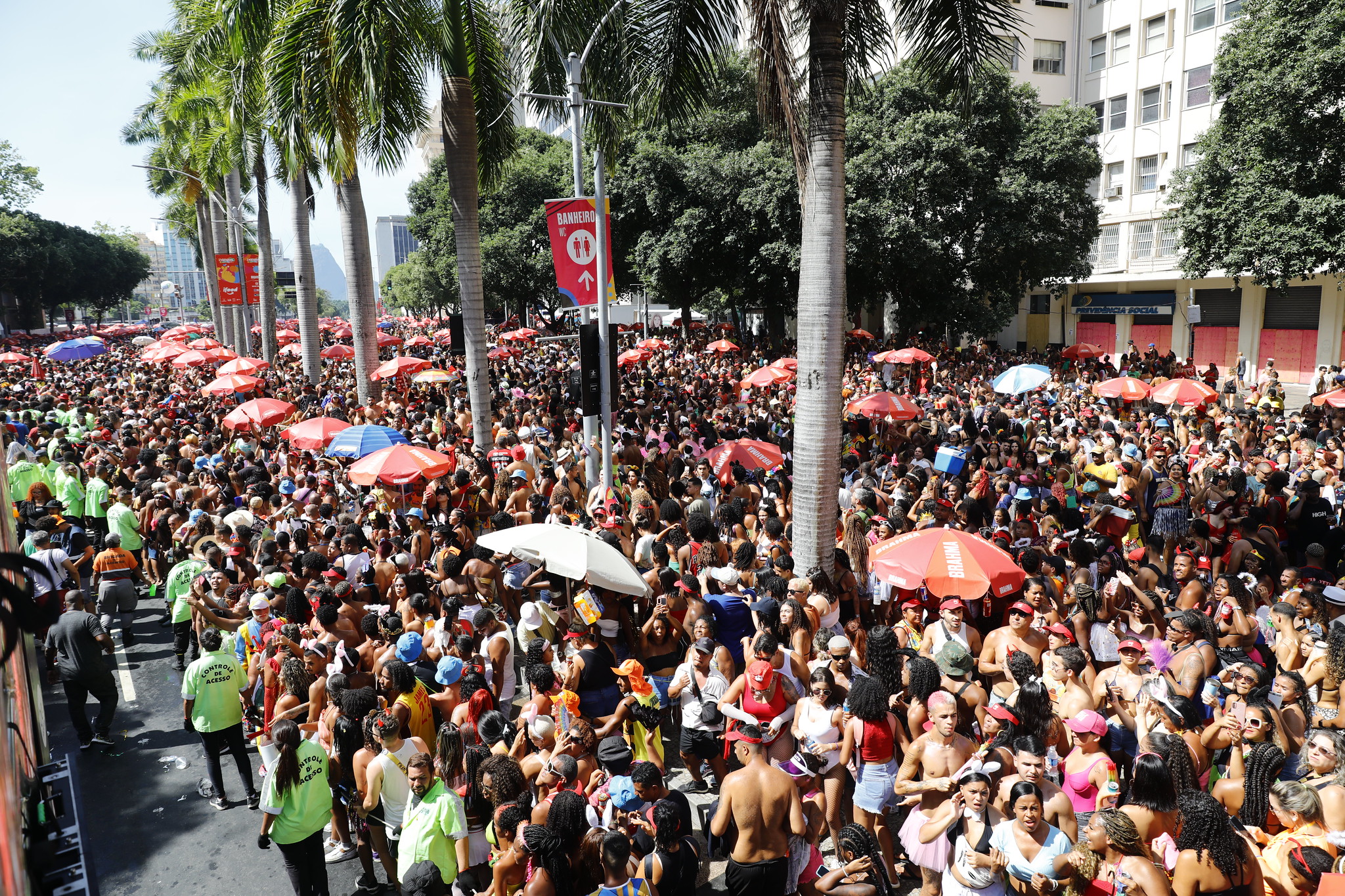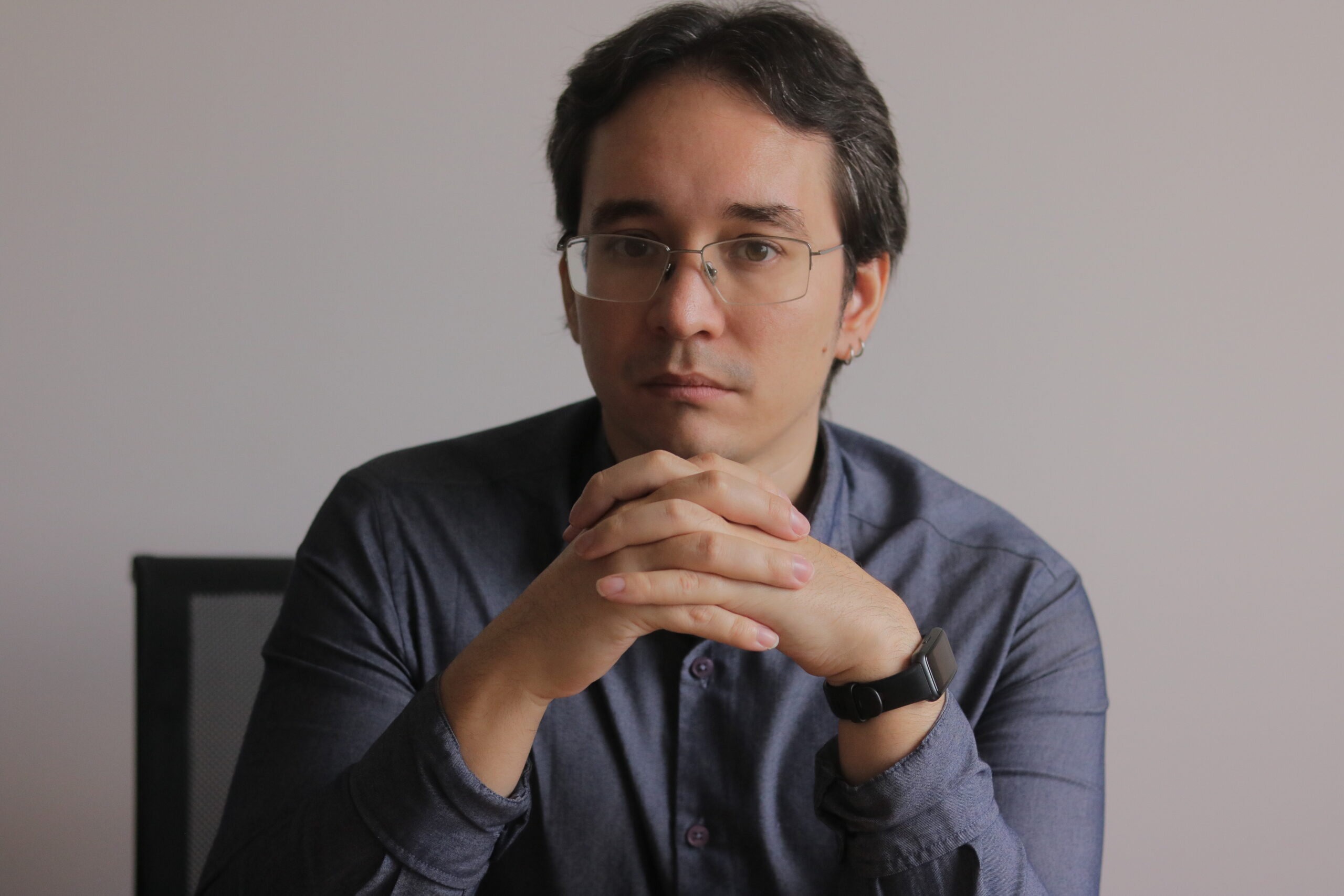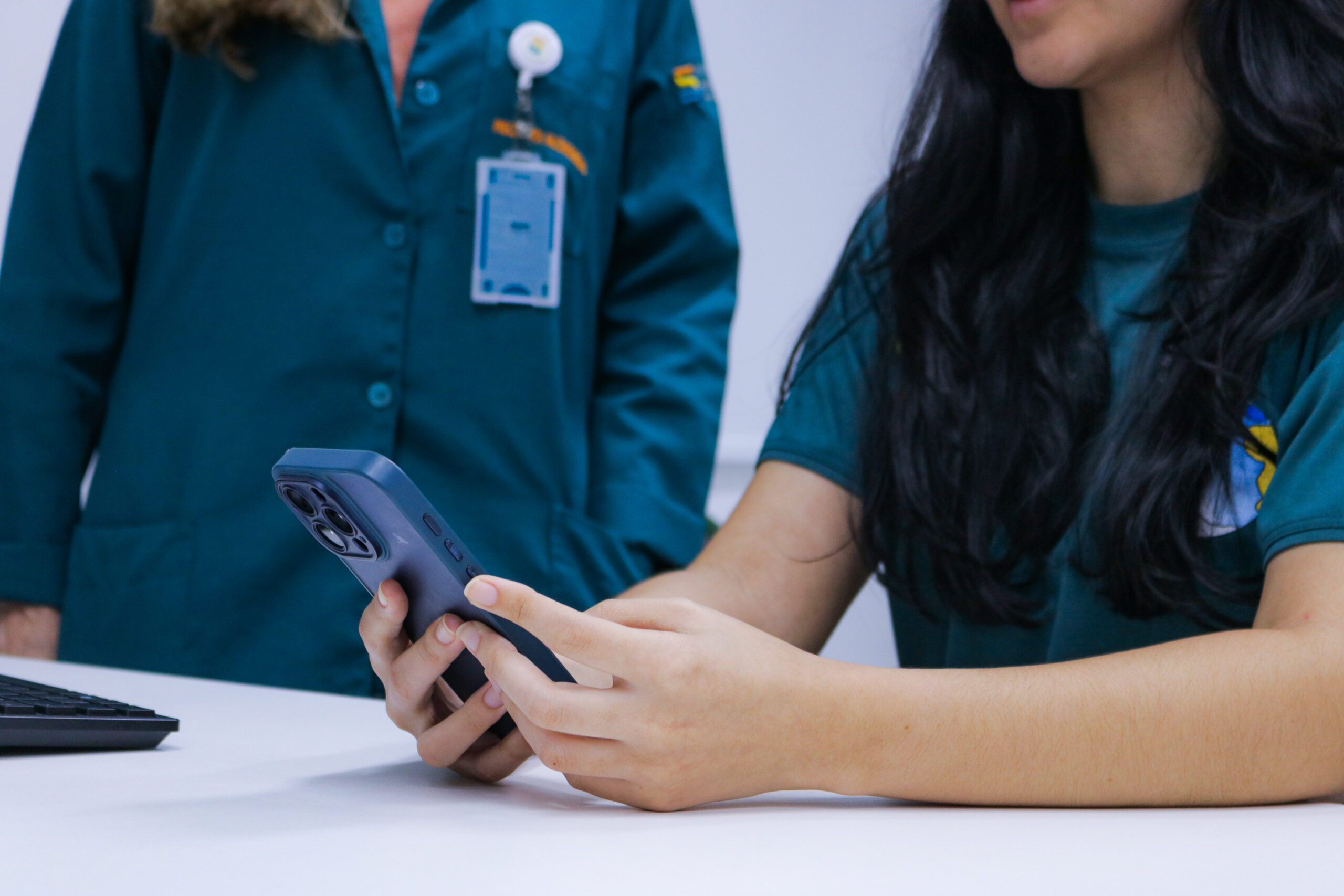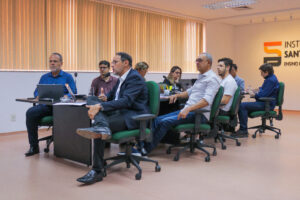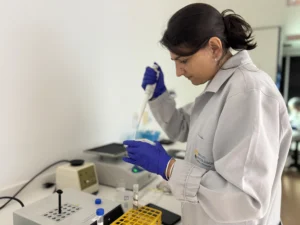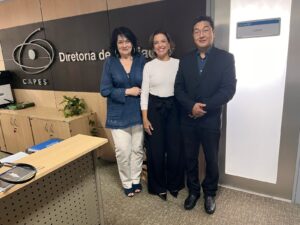
Renata Moura It is Kamila Tuenia
reporters
Thirty-eight years after she was born, after doctors said “she won't survive” and announced to her family “lose hope”, Bruna Filizzola looks into the camera and pleads with dozens of men and women: “Trust your children, they are capable. These are children who can conquer the world.”
The video lasts approximately 10 minutes and is shown in an auditorium in Anita Garibaldi Health Education and Research Center, from the Santos Dumont Institute (ISD), in Macaíba (RN). The spectators are mothers and fathers of children and adolescents with different types of spinal cord injuries, treated at the Center.
The adults applaud the testimony and embark on a reflection on the future. Meanwhile, the children watch another recording in the next room and say “wow!” when they see scenes in which they read, write, show drawings, surf, play ball, bake cake, play the violin, ride a bike and pose for a photo, smiling.

Like Bruna, some of them were born with myelomeningocele, the most serious type of spina bifida – a malformation of the nervous system that affects the spine and can result in paralysis of the legs and compromise bladder and bowel function.
Brazil has already been named by the World Health Organization (WHO) as the fourth country in prevalence of this malformation, behind Mexico, Venezuela and Bulgaria.
PPrognoses of reduced life expectancy were not rare. “But this reality changed with the advancement of treatments”, explains Camila Simão, physical rehabilitation coordinator, physiotherapist and multidisciplinary preceptor at Anita.
UAn average of 50 children and adolescents per month are treated at the Center's Children's Spinal Cord Injury clinic, one of the nine it houses. Around 90% of the clinic's patients, according to Camila, have some type of spina bifida.
"ADespite not having a cure, there are multidisciplinary treatments, stimuli, therapies and resources suitable for gains in functionality, quality of life and greater social inclusion”, observes the physiotherapist.
Family support, Bruna guarantees, is also fundamental in the process.
“My persistence and that of my parents have always been great. There are moments when we feel sad, when we let ourselves get down, when we don't trust. But when we get that strength from within and say 'everything will be fine'...that made my parents believe. It was always faith, positivity, hope”, she said in the video she recorded to tell her own story to mothers and fathers of children and teenagers cared for at Anita.
Myelomeningocele
Myelomeningocele is a congenital malformation, that is, it is already visible at the birth of the baby.
The backbone of a child with this condition does not form as it should during pregnancy. She born with an opening in the bones of the spine and through this opening comes a kind of bag filled with fluid, meninges and marrow or nerve roots – exposed on the back.
Surgery to close this opening is recommended within the first 24 hours after birth. “When I went into surgery, my mother looked at me and was sure that I was going to live, even though the doctors didn't believe it”, says Bruna. “Family motivation, persistence, physiotherapy and sports” were keys that, she says, allowed her to reach the future.
“I grew up, studied in normal schools, played sports, graduated in law, got married. My parents always pushed me forward, gave me strength”, she adds while hugging her 7-year-old daughter who she calls “God’s blessing”.
“Do your children need care? need. But never throw them down. Always give a lot of self-confidence.”
“We learn about overcoming difficulties”
Bruna was born and lives in Southeast Brazil. In the south of the country, Fábio Luiz Henz, 33 years old, was also born with myelomeningocele and followed paths full of challenges.
“The child will die. Any bacteria in this open marrow will be fatal,” a doctor initially said.
According to the perspective presented to the parents, the baby could also live in a vegetative state.
“We were stunned”, remembers Miguel Henz, Fábio’s father.
“But you will learn about overcoming obstacles later. Faith helps us overcome the unknown. We begin to discover the inner strength of children”, he adds alongside his wife, Clacy, and the dozens of women and men who watch Bruna and Fábio's testimonies at Anita, in Macaíba, a municipality 14km from Natal, capital of Rio. Great North.
In the article Consciousness in the vegetative state, doctor and writer Drauzio Varella describes the Vegetative state as “the most frustrating of human conditions”: “the person is alive, but seems incapable of reacting to external stimuli. (…) She opens her eyes, sleeps, wakes up, performs physiological functions, but for months, years, she remains oblivious, unable to show the slightest reaction. In this situation, family members often ask: 'Does she understand what we are saying?', 'Does she realize that we are on her side?'.
Contrary to initial expectations heard at the hospital, for Fábio this reality went far.
The boy who they thought would have no future graduated in law, works in the market as a businessman and proudly says that he was once a Paralympic swimming athlete, played football with his parents and currently practices handbiking, adapted cycling, and calisthenics, a set in exercises physical exercises in which the practitioner uses their own body weight.
“I went through difficulties”, says Fábio. "But I'm here. The 'vegetative' is here talking to you.”
Watch the video below with Fábio’s full statement:
“There are ways to strengthen families. To highlight potential”
Fábio, his parents and Bruna were invited by the Anita/ISD Spinal Cord Injury clinic to tell families of children and adolescents with spina bifida and other spinal cord injuries about how they dealt with the diagnosis and overcame challenges.
The discussion took place in reference to World Spina Bifida Day, established on October 25th, and its main theme was “the future”.
“To build the future, so that your children have a bright future, we have to build the present, the now”, said Fábio.
Issues such as physical and mental health, prejudice and support were discussed based on his and Bruna's statements.
“There are ways to strengthen children, adolescents and their families, showing and highlighting their potential,” said Camila Simão, rehabilitation coordinator at Anita. “Barriers exist, but there are also ways to overcome them.”
While the message was shared with mothers and fathers in the auditorium, Anita/ISD physiotherapist Gentil Fonseca and residents entertained and motivated children and teenagers in the next room.
“Our objective is to make them see that they do not just have functional difficulties and activity limitations, but rather that they have potential that can serve as a hobby and also become a profession”, says Fonseca, adding that “social participation, the encouraging autonomy and practicing physical exercises are tools that will stimulate children and adolescents in the rehabilitation process, but also in the construction of the individual”.
“By seeing the potential of others and their own potential, they come to understand that they can live with a disability and have a normal life”, he analyzes.
KNOW MORE
What is the treatment for myelomeningocele and other types of childhood spinal cord injury?
Myelomeningocele and other types of spinal cord injury require early and multidisciplinary treatment, which includes motor physiotherapy, urological physiotherapy, psychotherapy, neuropsychology, occupational therapy, follow-up with a neurosurgeon and orthopedist.
Camila Simão explains that spina bifida as a health condition can lead to congenital spinal cord injury and, consequently, to sensory, motor and bladder and bowel function changes.
In the case of the bladder, it leads to difficulties in urinary continence – that is, it can prevent the affected person from voluntarily 'holding in' pee and therefore having to empty the bladder with the help of a probe, a process called catheterization.
The bowel movement responsible for taking feces to the rectum, the part of the body where they exit, also undergoes changes and these patients may have intestinal constipation – known as “lazy” bowel – and also present so-called fecal incontinence, i.e. difficulty 'holding in the poop' when they feel the urge to defecate or, for example, make some common effort in everyday life.
“Physiotherapy works both to help with sensory and motor symptoms (motor physiotherapy) and to help with bladder and bowel behavior. The objective is to make them continents (without losing coconut and pee) through therapeutic strategies”, explains Camila Simão.
The sooner this type of intervention begins, according to the physiotherapist, the greater the chances of improving muscle and motor function, as well as functionality and participation. “If we don’t intervene early, this child may not acquire the skills they could achieve.”
Emotional issues of children and adolescents are also monitored by the Anita/ISD Children's Spinal Cord Injury Clinic. According to neuropsychologist Artemis de Paula, these issues may or may not be related to the diagnosis. “Sometimes these are questions about prejudice that they suffer, the lack of accessibility, understanding their own clinical condition, but there may also be other issues such as family circumstances, for example, not necessarily due to this health condition”.
According to the neuropsychologist, skills that influence cognitive control and regulation processes, such as selective attention, planning, self-control and organization, can be more challenging for children and adolescents with spina bifida and neuropsychological monitoring can be an ally in this process. “During early childhood”, notes Artemis, “it is necessary to work on early stimulation to ensure optimal development of the child overall, at school age it is important to help with possible learning difficulties and in adolescence/youth it is necessary to start think about the perspectives of professional choice and career for the future”.
“In the case of babies with spinal cord injuries, therapy is more related to the mother or caregivers, whereas with adolescents and children we work with development monitoring, neuropsychological assessment and stimulation guidance”, says the neuroposicologist.
Around 20 mothers and fathers participated in the Spina Bifida meeting at Anita. On the same screen where they saw Bruna and Fábio's testimonies, they watched the video in which the children appear doing what they like to do most today. The video's soundtrack is by the American pop group Now United and says, in English, “come along”.




